Blog
January 12th, 2013
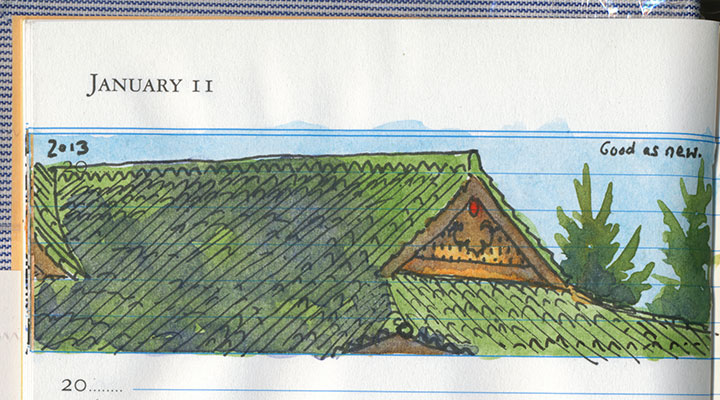
This weekend has given us that rarest of Northwest treats: winter sunshine. When that happens it’s also usually too cold to stand outside and draw, but this time it was worth the frozen fingertips to mark the occasion in my new daily book. That’s because the restoration of one of my favorite Tacoma landmarks is finally complete.
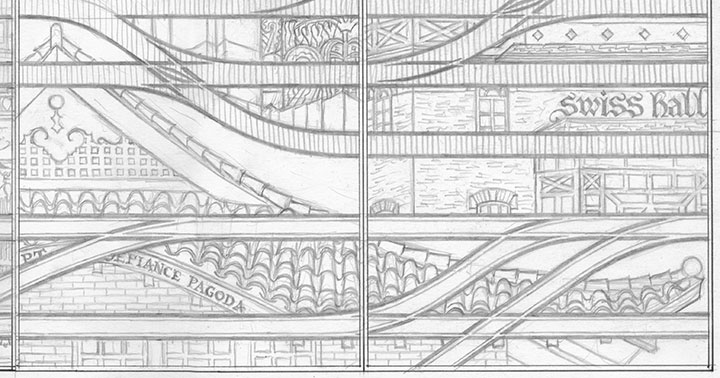
The Point Defiance Pagoda is one of the jewels in Tacoma’s crown. Built ninety-nine years ago, it began as a streetcar station and now stands as the centerpiece of our largest city park. It’s also a recurring character in my work—besides being iconic, it’s awfully fun to draw.
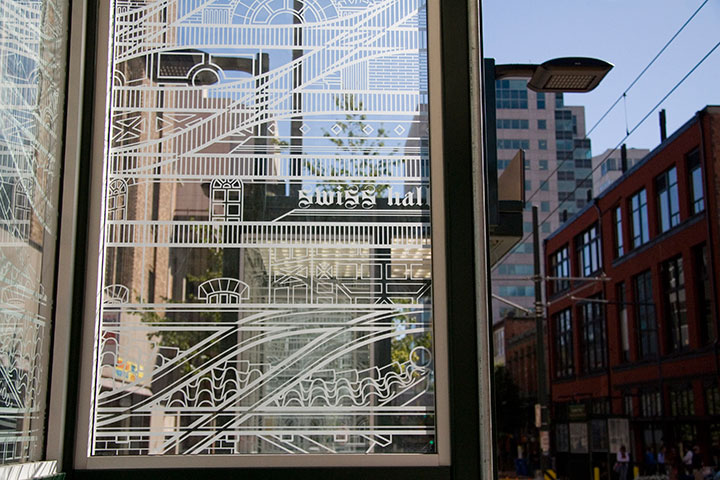
Detail of Continuum
It’s easy to forget how delicate our historic structures are, however. While I was working on this very portion of my Link Light Rail station design, I got word that the building was suddenly on the verge of ruin. Some kid had intentionally set fire to the pagoda—a few minutes of destructive boredom, and a hundred years went up in flames.
It was heartbreaking to hear the tales of Metro Parks officials, who had to watch firefighters toss the century-old ceramic roof tiles to the concrete ground to reach the burning beams inside.

In a way, though, maybe it’s a good thing it was the pagoda that burned, versus a lesser-known historic building. The public rallied, and restoration began almost immediately. Seven thousand roof tiles were hand-cleaned and reattached, and all fourteen of the original windows were salvaged. The restoration also allowed for the reintroduction or improvement of elements that had been remodeled away over the years—like the planting circle out front, or lighting that highlights the ornate roof beams inside (replacing the 1960s-era sconces that had been glommed on).

One of my illustrations for the Tacoma Playing Cards—you can find the original painting here
And now it’s as if the fire never happened. More than that—at today’s grand reopening celebration I got a good glimpse of its original glory. Somehow I couldn’t quite repress the feeling that a streetcar might come around the corner at any moment.
My favorite part is that I no longer have to rely solely on a deck of cards for good memories of the pagoda. Now I can resume my visits to the real thing—sketchbook in hand, as always.
January 1st, 2011
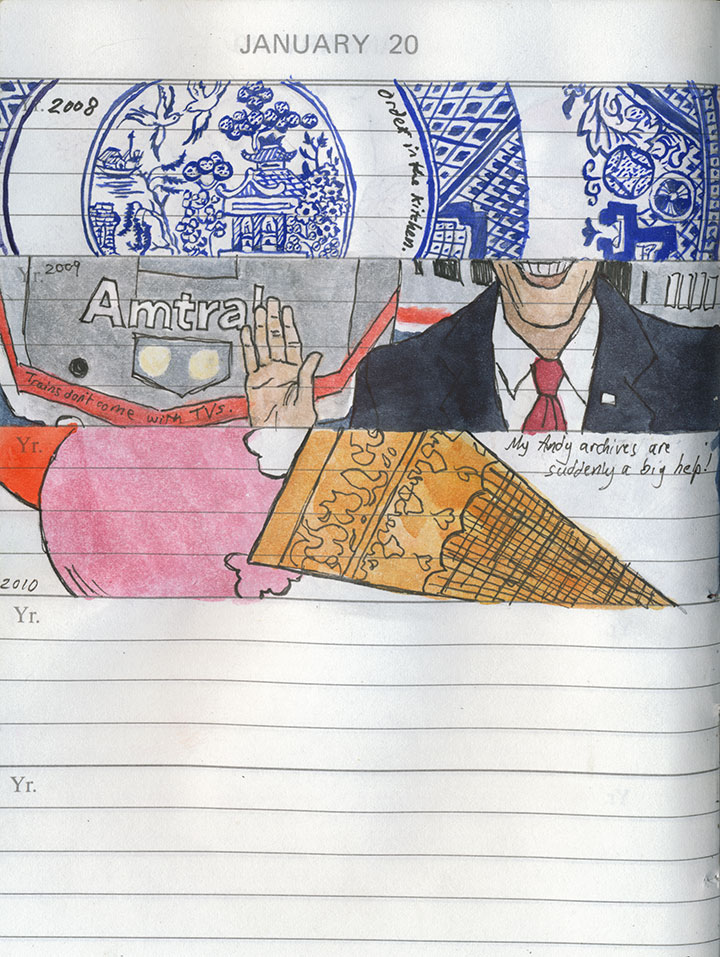
This might seem a little strange, coming from me, but the New Year’s resolution at the top of my “art” category is to draw more.

I mean that I’d like to spend more time with my sketchbooks—with everything else that happened last year, there just didn’t seem to be a spare second for observing the moment and jotting it down.
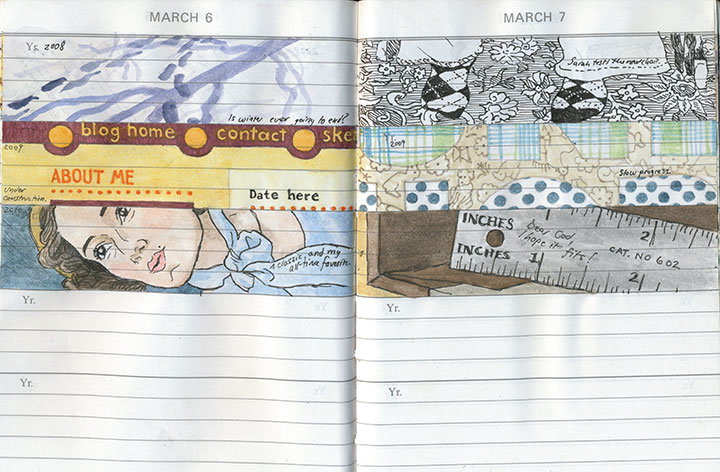
The daily book was about the only thing that received any attention, and even it spent the entire year on the back-back-back burner.

I still have quite a bit of catching up to do there, though—
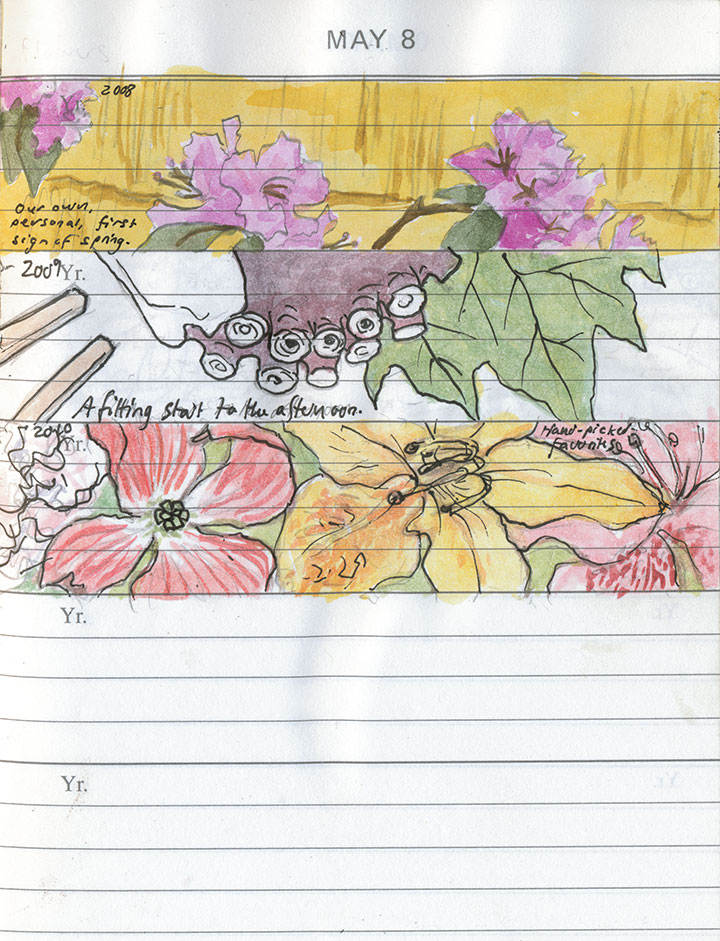
so that’s where I’m going to start.
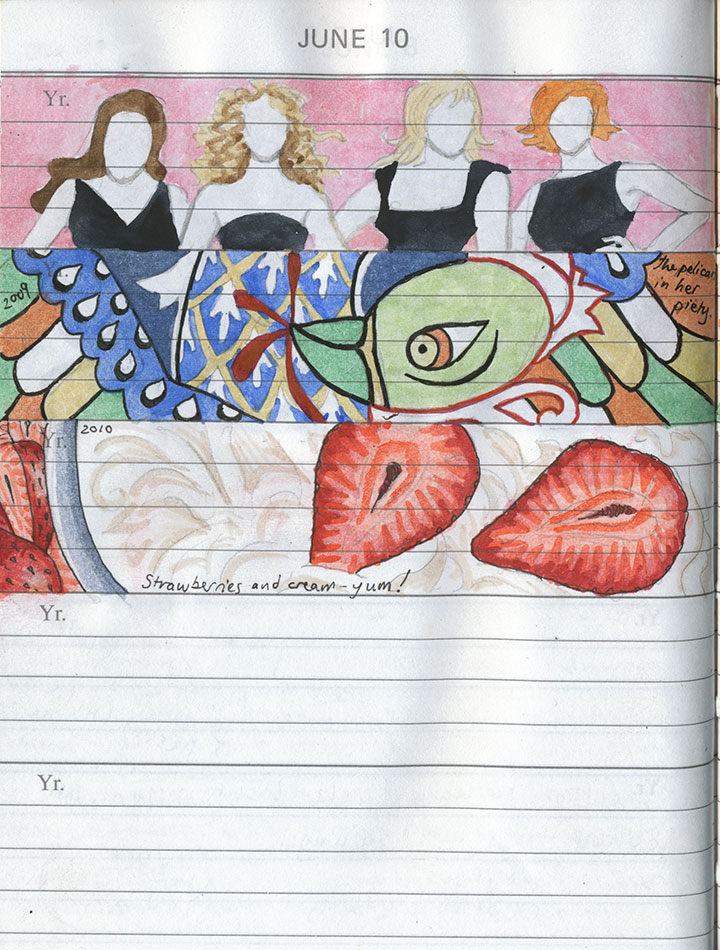
It’s a daunting prospect; even just filling in half-finished sketches (maybe I should have shown you those instead!) amounts to a huge time investment, and a mountain of work.
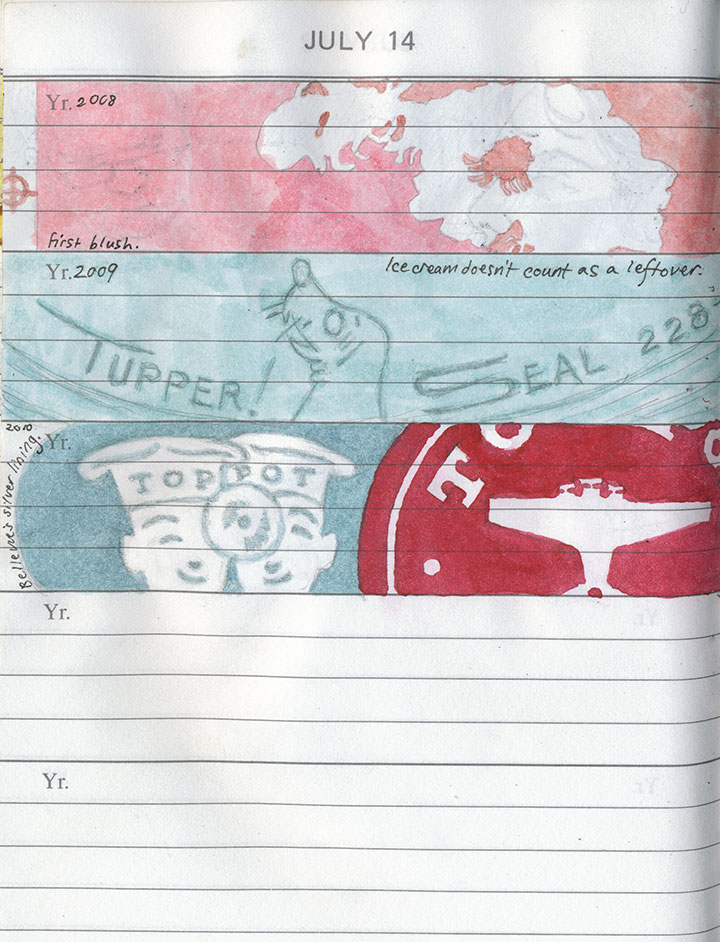
But I’ll get there. And besides, it’s those last two blank slots on every page that interest me the most.
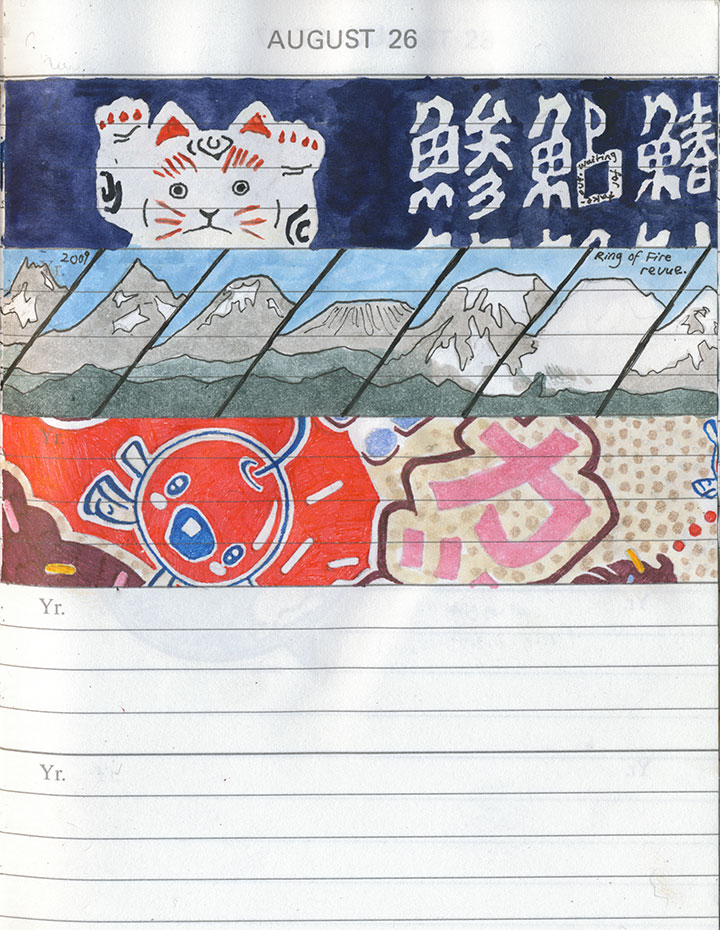
They stand for the future that’s unwritten, and I find I can’t imagine what could possibly complete the picture—nor could I ever have predicted what has ended up here thus far.
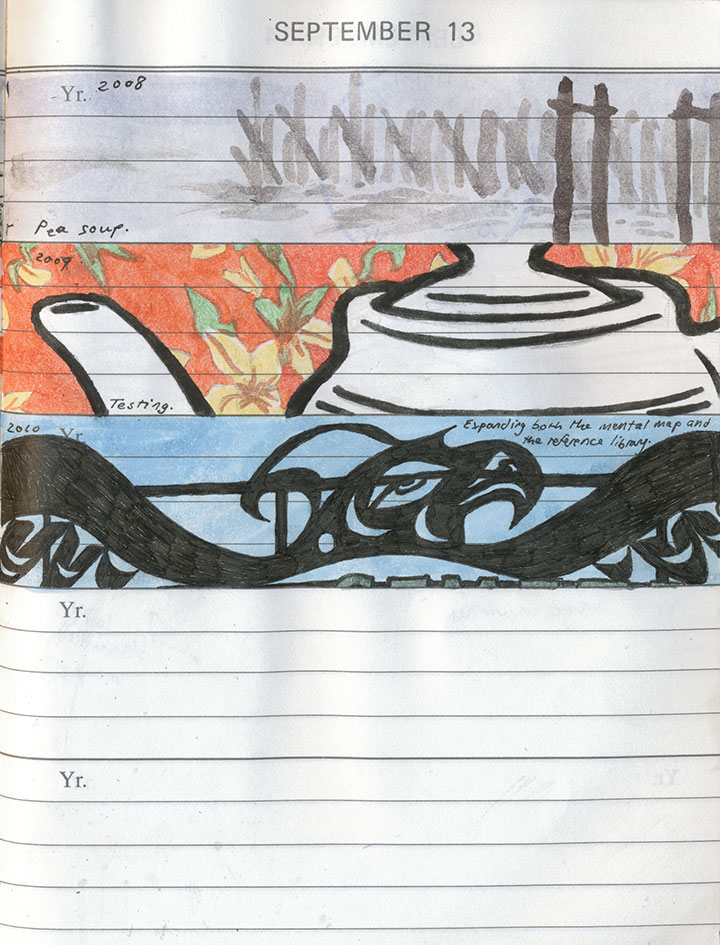
When I first started this project, it seemed like a painfully slow undertaking.

But now I’m surprised at how quickly the book is filling up,

and I’m anxious to find out what will fill out this page—and the next, and the next.
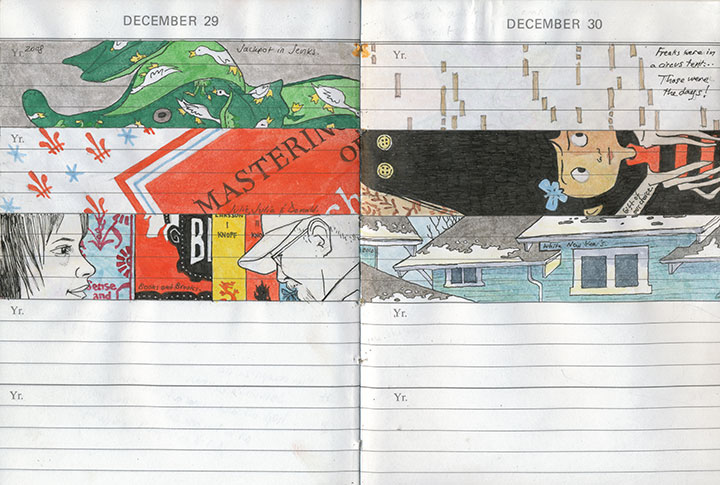
Well, today I flip the book back to the beginning, pencil in hand—and so I’ll find out soon enough.
Happy New Year!
December 25th, 2010
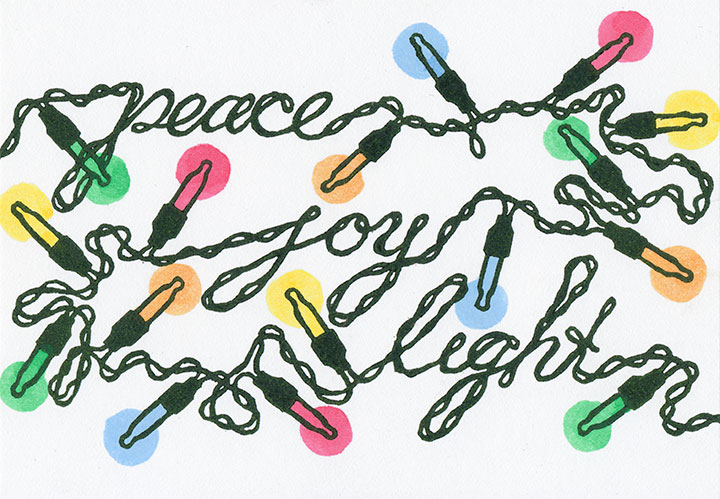
I was afraid I wasn’t going to have any holiday photos to show you—when I was in Portland the other week, my camera took a nosedive after being bumped off my shoulder in a crowded room.
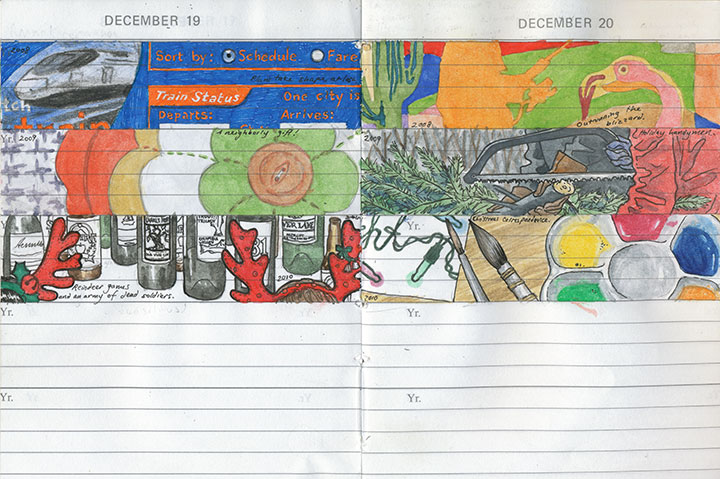
Snippets from my daily journal
So I shipped the lens off to the good folks at Canon for repair, and switched to paper for awhile.

One of Maurice Sendak’s eye-candy stage sets for the Pacific NW Ballet’s Nutcracker
My favorite thing about sketchbooks is that I can take them anywhere—including places where cameras, functioning or not, are strictly verboten.
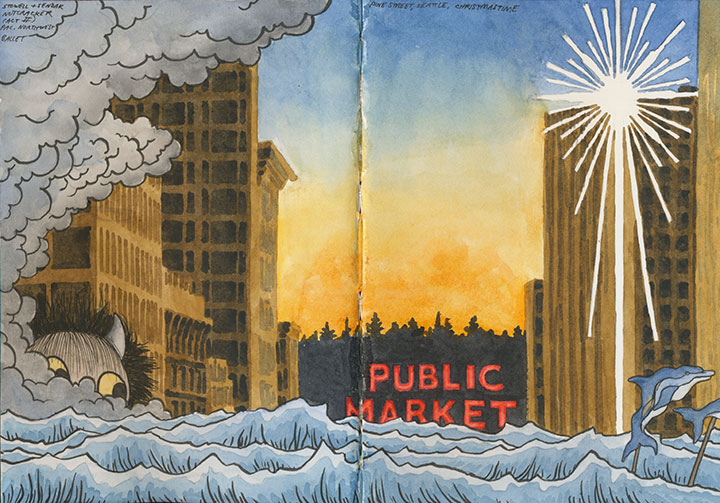
More Nutcracker scenery, plus Christmas on Pine Street in Seattle
The downside, though, is that it takes me a lot longer to draw a picture than to shoot one—so my output is always smaller than I’d like.
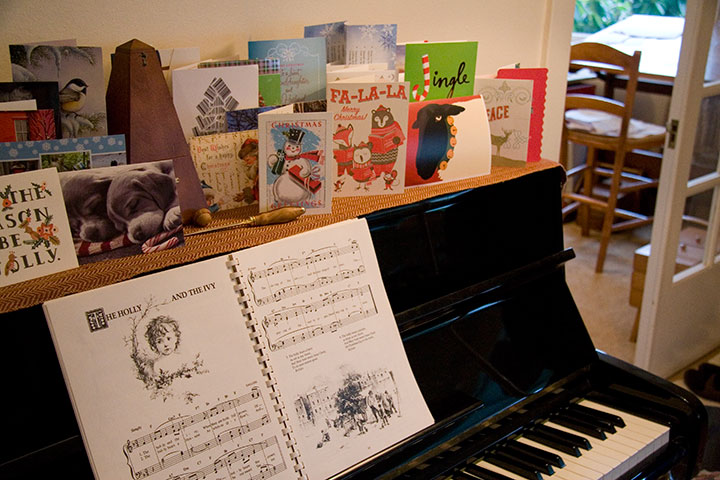
But then the Fedex guy showed up with my lens, good as new and just in time for Christmas.

I managed to refrain from hugging him, and then hopped around the house in manic glee, documenting the holiday the Tailor and I have spent all week creating.
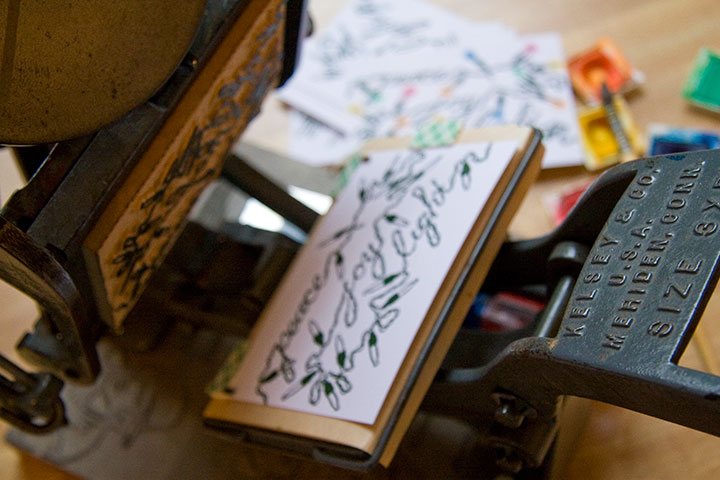
(We finally broke down and bought twinkle lights for the tree; which provided the perfect inspiration for this year’s card!)
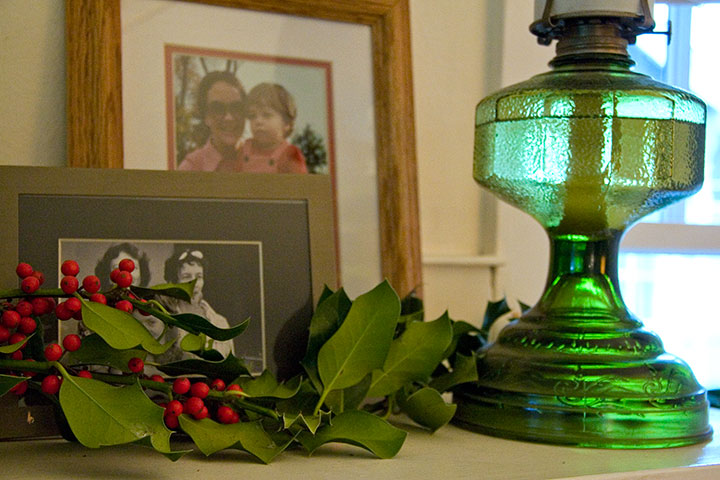
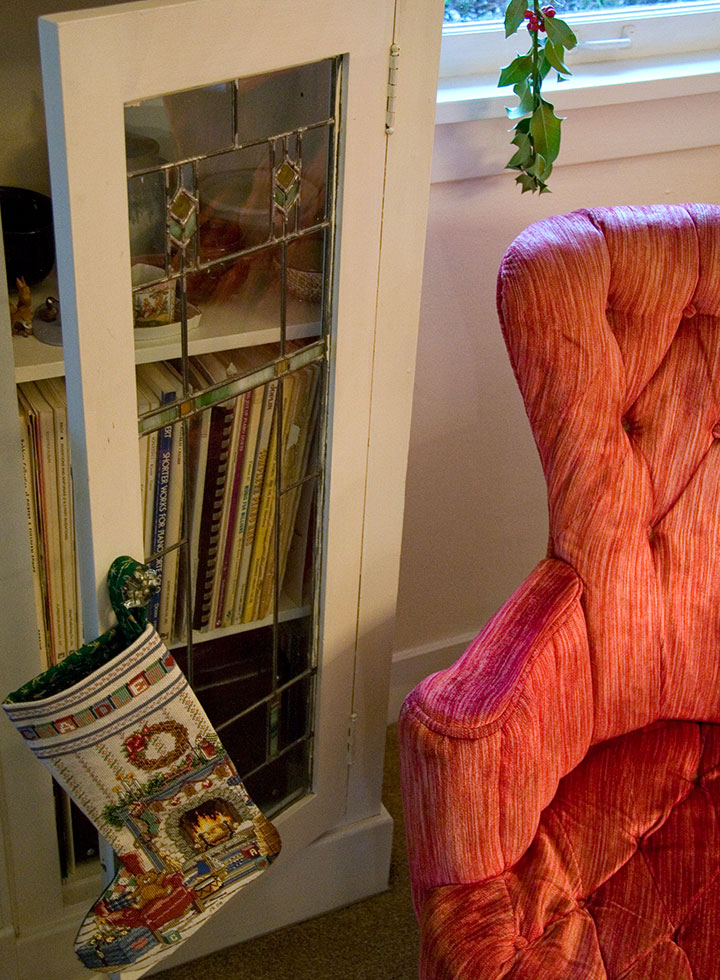
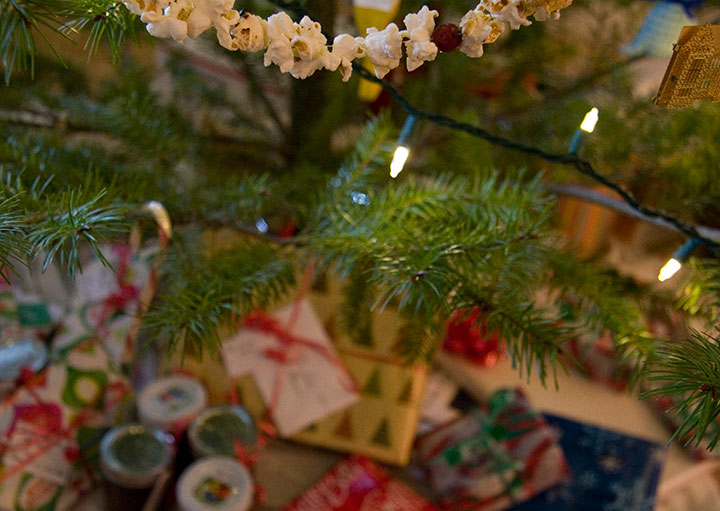
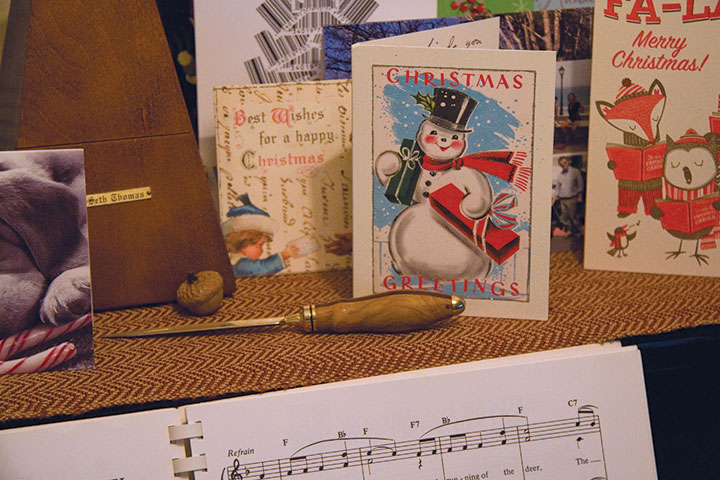
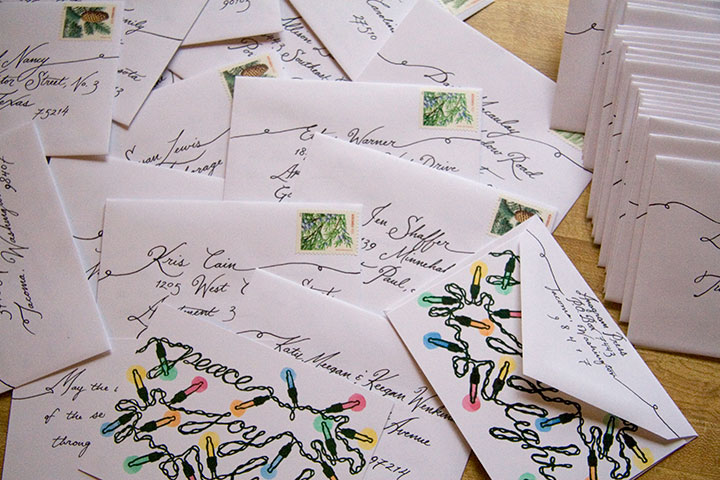
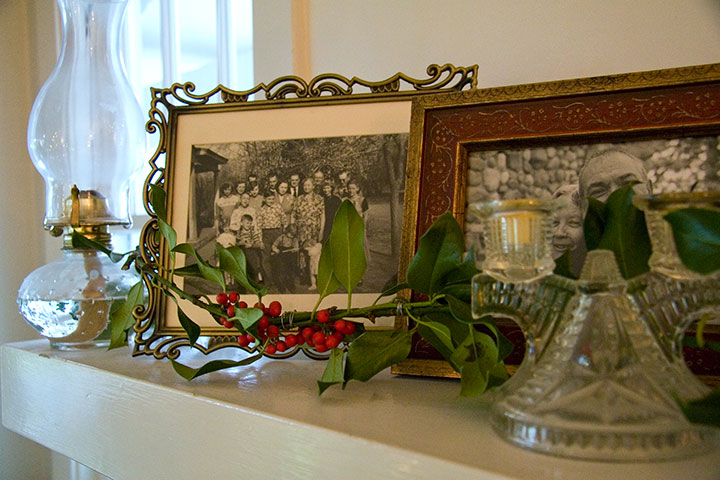
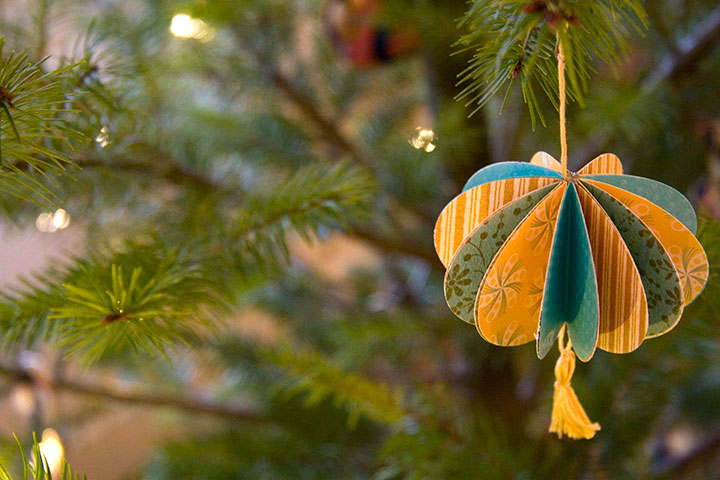
Wherever today finds you, have a warm, cozy, abundant, and very merry Christmas.
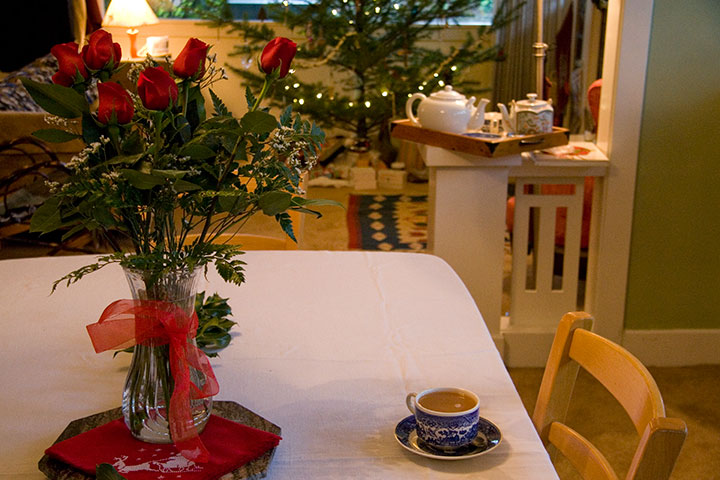
August 21st, 2010
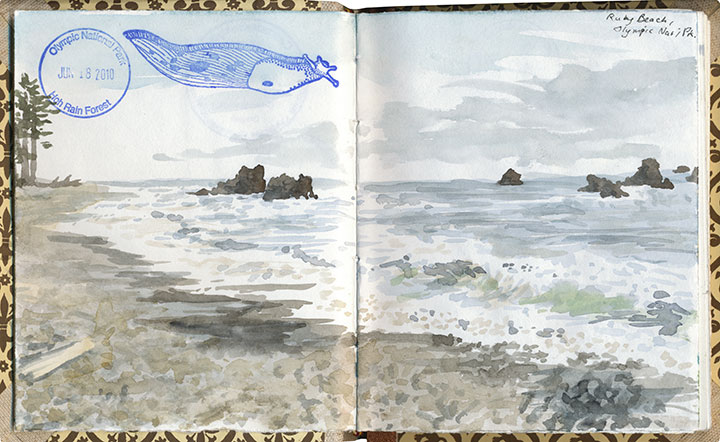
Since I posted this drawing and some others this summer, people have been asking me what’s with the stamps in my sketchbook. I guess the short answer is that each one is a little piece of personal tradition.
But you know I don’t really do short answers.
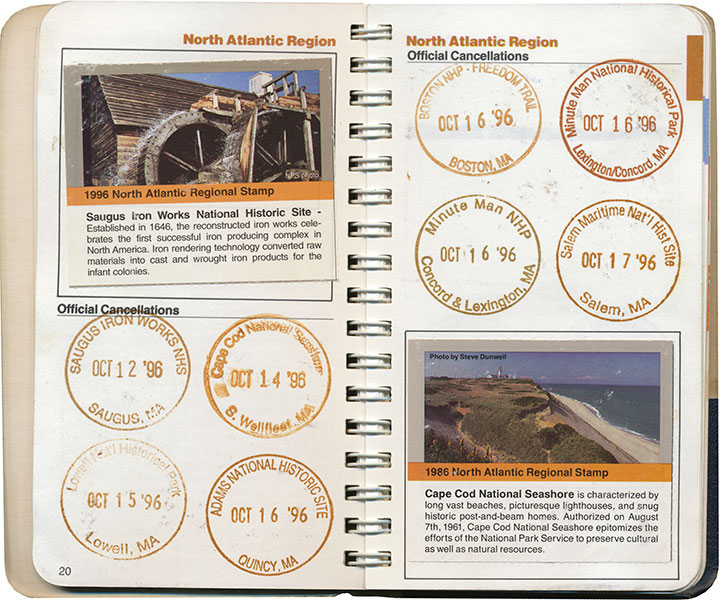
The long one, then.
I grew up in a nomadic family. Between the moves required by Dad’s job in the Air Force and a fierce wanderlust that runs in all the O’Leary veins, we had a lot of reasons to travel. Dad and I, especially, would spend hours poring over our dog-eared Rand McNally road atlas, plotting routes over the back-est of back roads (the squigglier the line on the map, the better) and stops at as many points of interests as we could cram into a journey from A to B.
When I was ten, we made a circuit of our then-home state of Colorado, and devoted our time to exploring every national park and monument we could reach along the loop. At each park’s visitor center, we noticed a rubber stamp and ink pad stationed at the front desk. When we finally asked a ranger what they were for, she handed us a small blue notebook and proceeded to explain about the National Park Service’s Passport program.
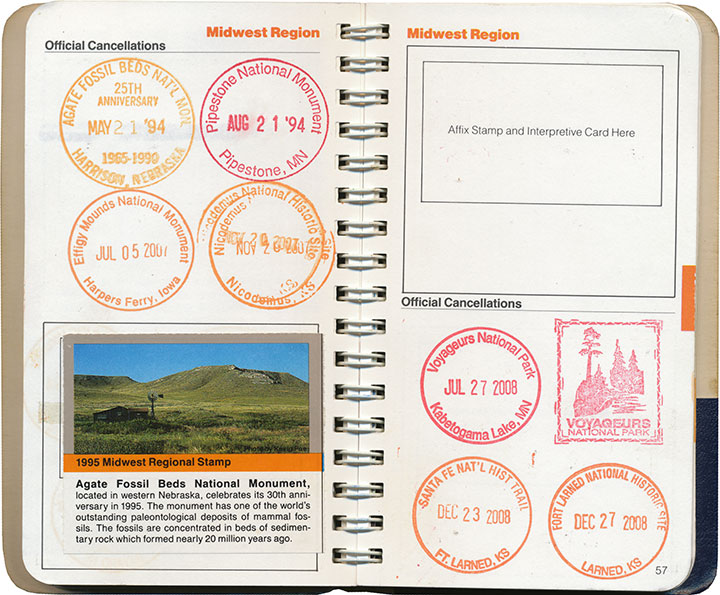
A stamp to collect at every NPS property in the country, and a tidy little book to hold them all? I was hooked.
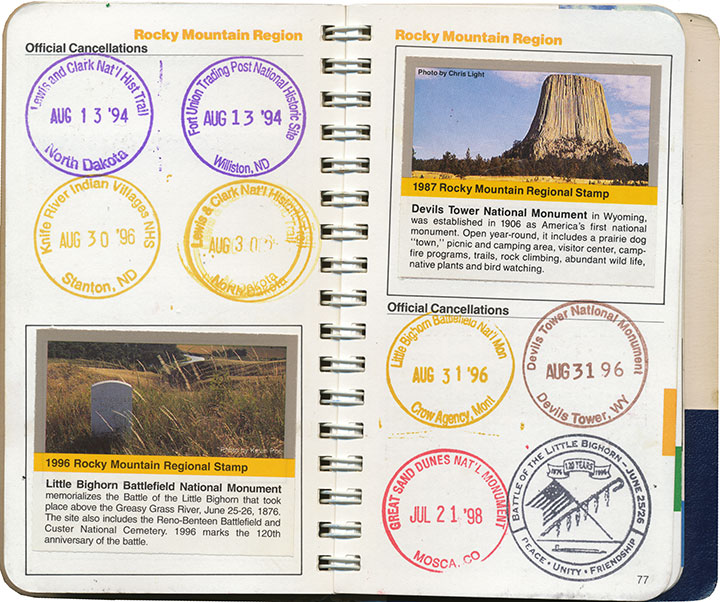
Dad and I found ways to sneak a national monument or two into every road trip and relocation—and even took impromptu vacations just to add a new park to the list. My favorite memory is when I was in high school, and Dad popped his head into my room:
“Have any plans this weekend?”
“Uh, no…”
“Wanna go to Montana?”
So we jumped in the car and drove 600 miles just to flip General Custer the bird at Little Bighorn (I had just read Bury My Heart at Wounded Knee, so he wasn’t exactly stirring me to patriotism). I mean, if you’re going to do it, you might as well go all out, after all. And we had the stamp to commemorate the moment.
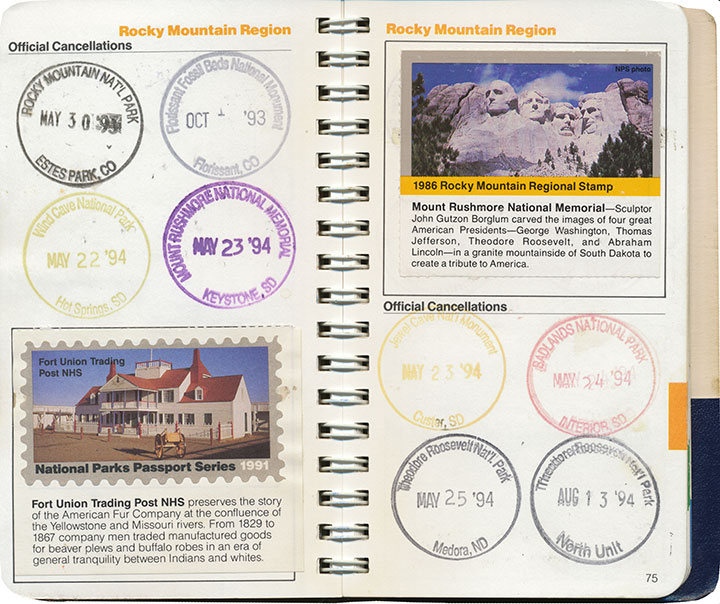
The Passport program also includes collectible paper stamps, which can be purchased from afar (as opposed to the ink cancellations, which are free but can only be obtained in person). I’m pretty lukewarm about these, though; by the time I jumped on the bandwagon they had already phased out the super-cool two-piece design pictured in the lower left corner above, in favor of the cheaper, lower-quality one-piece stamp in the upper right. Since those have been revamped yet again into a pressure-adhesive sticker—and who knows what heinously non-archival chemicals might be in the glue—I’m even less of a completist about them now.
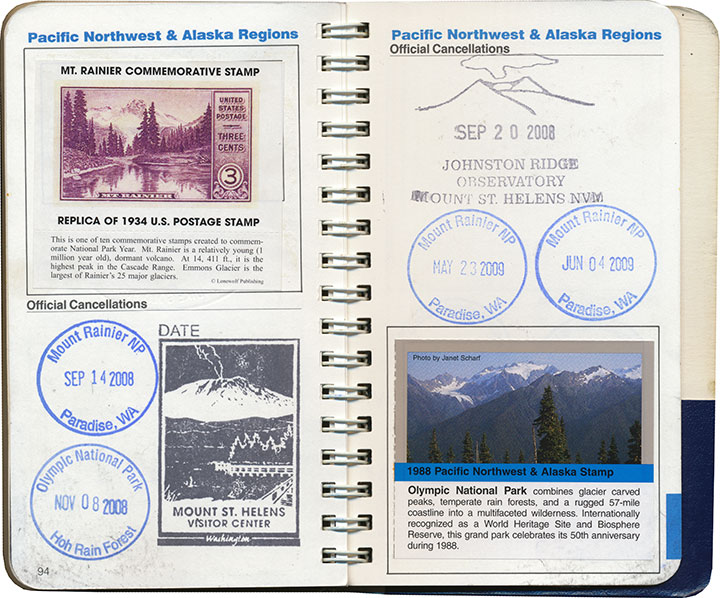
Anyway, I’ve burned through most of the regional sections in my Passport,
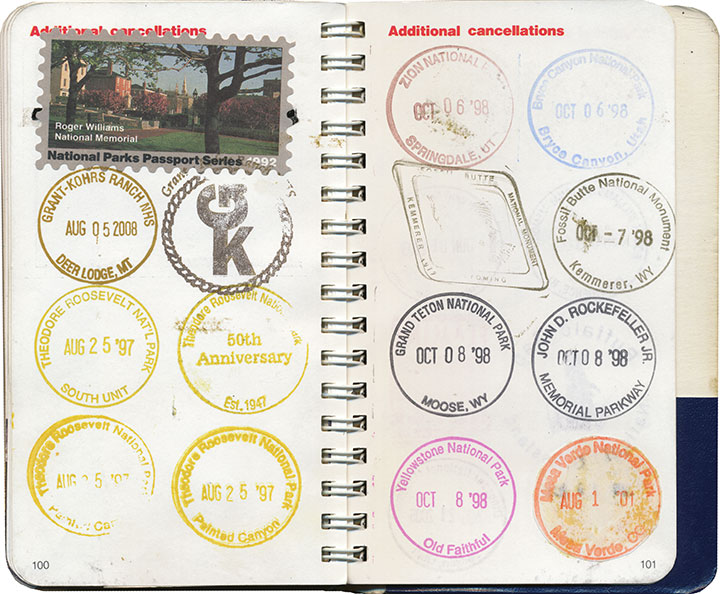
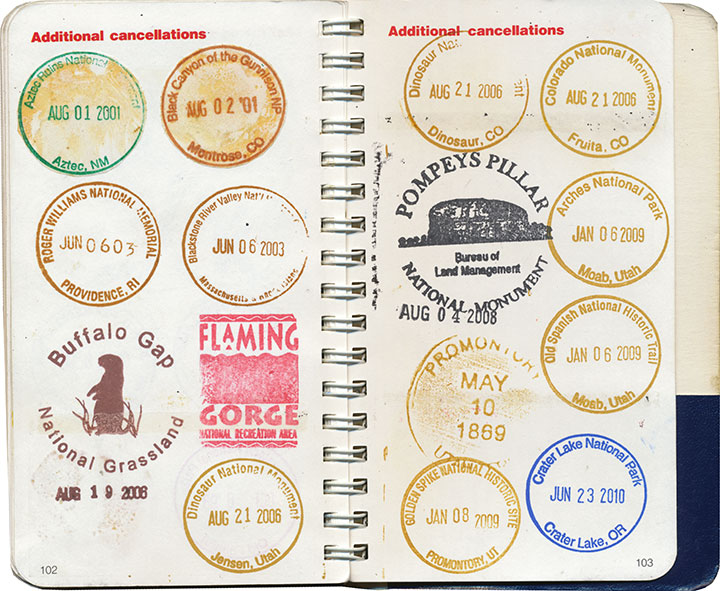
and every inch of overflow space.
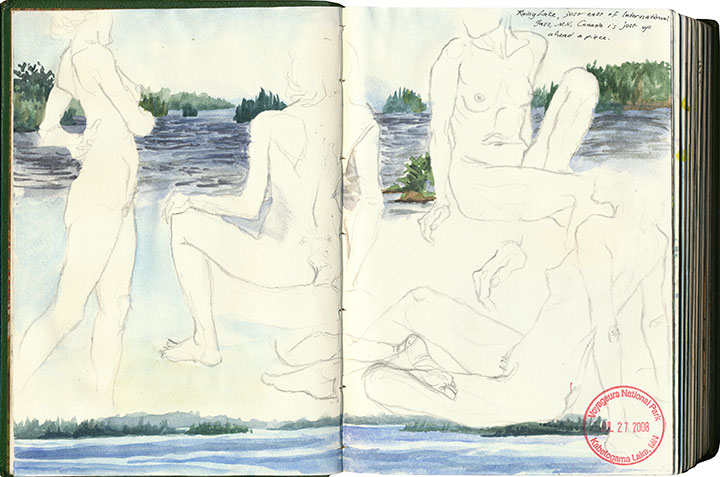
So I’ve branched out a bit.
What I didn’t know as a kid was that my Passport helped me develop my interest in nearly everything I love most: traveling, design, archiving, printmaking, history, typography, bookmaking, and so on.
At some point along the way, I realized that what I really mattered to me (beyond the travel itself) was the act of adding to an ongoing work—and then looking back to see what I had accomplished. That what I had been doing all along, by compiling this little individual history, is creating some form of artist book. And that my frustrations over an imperfect format were really a desire to create my own.
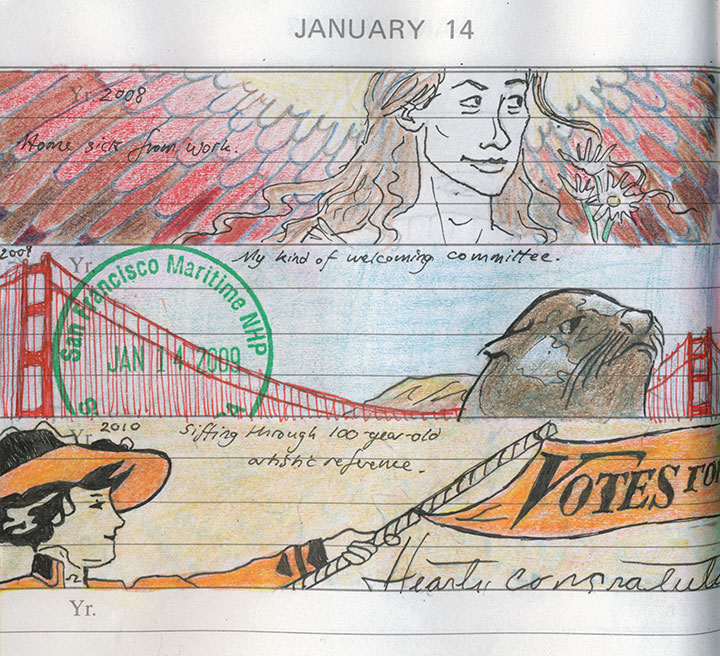
A page from my daily book—more on that here.
So now all of my sketchbooks are Passports, each custom-tailored—
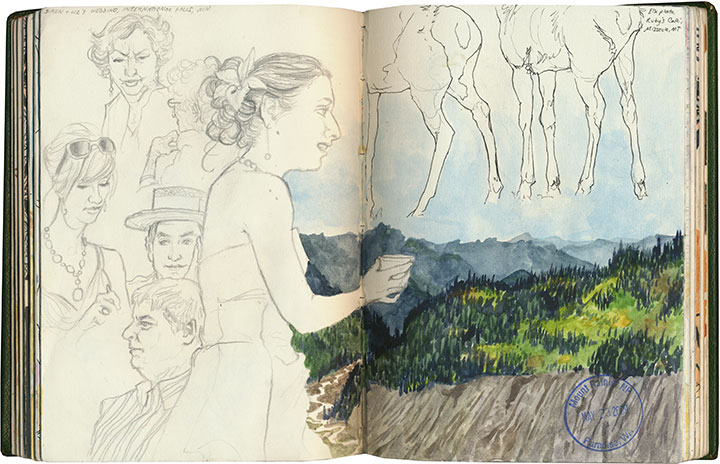
each infinitely flexible, ready for whatever adventures wait to be documented.

Here it is, nearly twenty years later, and I’m as eager as ever. Moreover, it’s my goal to collect every last cancellation within the entire National Park System before I stamp the big passport book in the sky. I’m about a quarter of the way there.
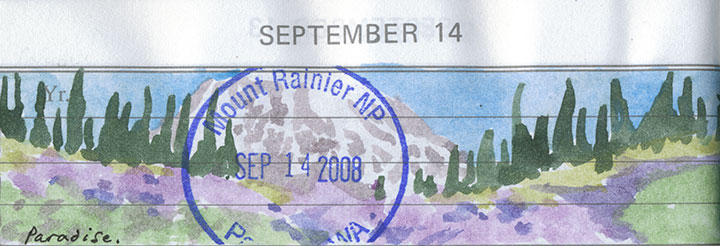
And I’ll probably have to build a library for all the sketchbooks I’ll fill between now and then.
Save
January 10th, 2010

I find I’m spending more time at the drafting table these days, and far fewer hours chained to the computer. This month I am blessed with an assistant—a brilliant young woman who is helping me with my administrative and production work, in exchange for school credit, a little professional experience and the chance to beef up her design software skills.
We’re lucky to have here in T-town an arts-magnet public high school, and part of the curriculum for juniors and seniors is an internship opportunity during the winter term. I was completely ignorant of this until I received Zooey’s email last fall, asking if I would be willing to take her on. I almost turned her down, simply because I couldn’t imagine I’d have enough to keep her busy and interested for three 40-hour weeks.
But then it occurred to me that I might be able give her an accurate idea of what it’s actually like to make one’s living as a full-time artist—which largely consists of being one’s own secretary, account manager, bean-counter, marketing department, production assistant and gopher, as well as coming up with all the creative ideas. That’s something I wish I had known as a student, and yet was certainly never taught in art school.
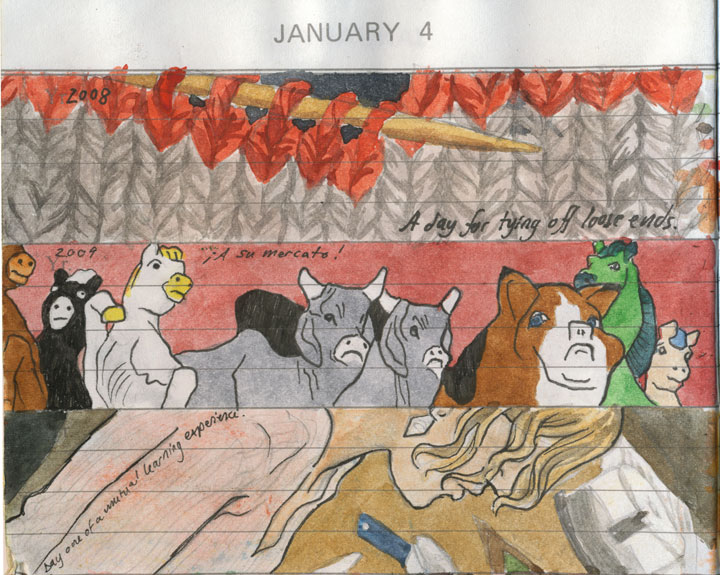
As it turns out, there’s plenty of work for both of us, and it’s been a mutual learning experience. Zooey (not her real name, in keeping with my little privacy policy) is picking up design skills they aren’t teaching at the high school level, attending client meetings and press checks, learning the ins and outs of seeing a project from concept to completion, and contributing her own ideas to creative discussions and brainstorming sessions. And I’m able to spend more time actually creating artwork, rather than endlessly playing catch-up with back-burner projects that should have been done months ago (although I crossed my heart and made her a solemn vow that I would get my own damn coffee).
The best part is having good company during the day. Running a one-woman shop is pretty solitary work, and learning that Zooey is not only a talented artist but also a mutual audiophile and movie geek made her an instant kindred spirit. (It was funny to discover that we both have a habit of singing along with the background music, but often choose different vocal parts to follow: harmony is so much more fun than a solo.) So these days I’m churning out new work and ideas faster than ever, while Zooey keeps a hand on the metaphorical wheel—and all the while the studio is filled with music and laughter.
I’m a control freak by nature, so I’m pleasantly surprised to find myself capable of letting go of the reins a bit. And I was even more surprised to learn that Zooey is the only student working with an individual artist this year (everyone else is working with firms or large companies). Here’s hoping that other artists and freelancers open their doors and minds to future students—there’s so much to learn, on both sides.

December 31st, 2009
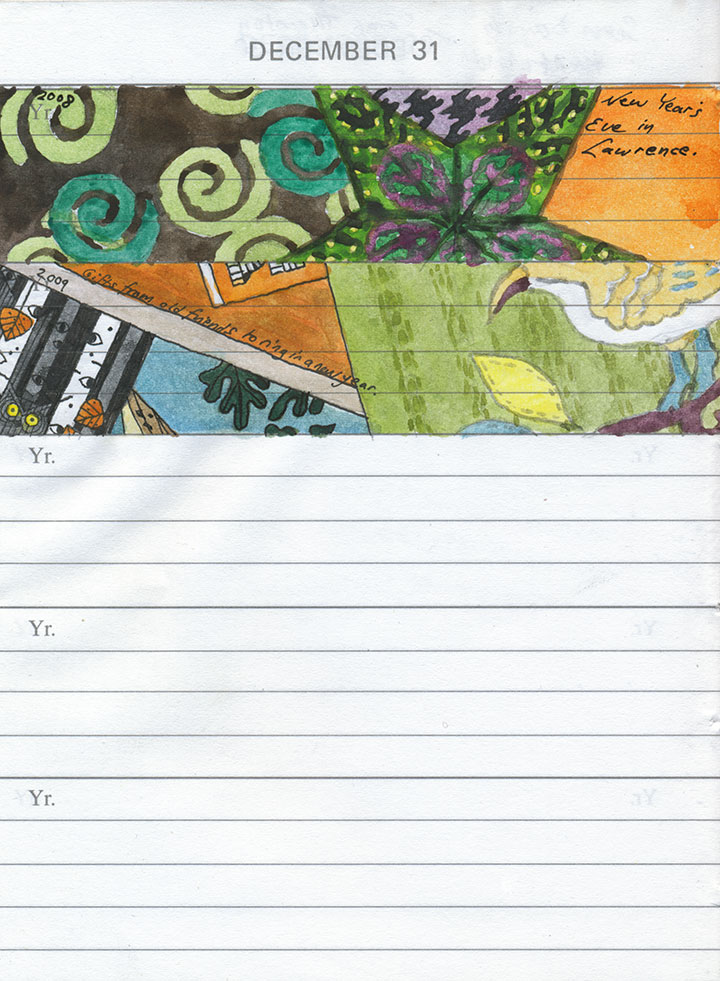
End-of-the-year summaries have never been my strong suit, not least because I tend to measure time on completely different terms than the standard calendar (like counting up from the anniversary of an important event, for instance). And since nobody seems to be able to agree on whether the decade ends this year or next (anyway, doesn’t any ten-year span count as a decade?), I think I’ll leave that one alone as well.
Instead, I thought I’d share my own way of marking time—an experiment that I’ve been working on for two years now.
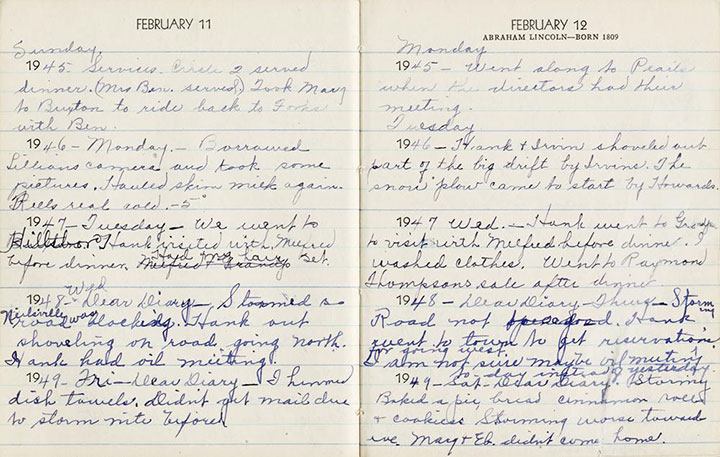
My friend Sarah Christianson has spent the last several years documenting the history of her fifth-generation family farm. Among her family artifacts are several of her great grandmother’s daily diaries, which Mrs. Anderson faithfully kept for many years. As you can see, there isn’t much space to write (so most entries say things like, “Went to the store, visited with Mildred,” etc.)—but what really interested me was how the five-year format of each page paints a larger picture of a woman’s life.

Sarah and I were both inspired to start five-year journals of our own, but I decided to turn mine into a sketchbook. I loved the idea and the challenge of documenting each day with a tiny, panoramic image.
Almost every drawing depicts something mundane, even trivial; it might be a sliver of that day’s activities, or just a snippet of an object that caught my eye. I’m almost never specific in the brief phrase written in each space—in fact, already I find myself forgetting what I was referring to when I go back to look at past entries. When I do remember what I was talking about, though, each illustration triggers my memories better and more richly than any of my photographs or writing can.
But that’s not the point of this project; this was never meant to be a detailed journal of my every thought or action. Instead, I’m trying to remind myself to really look at the world around me, and to live in my own present.
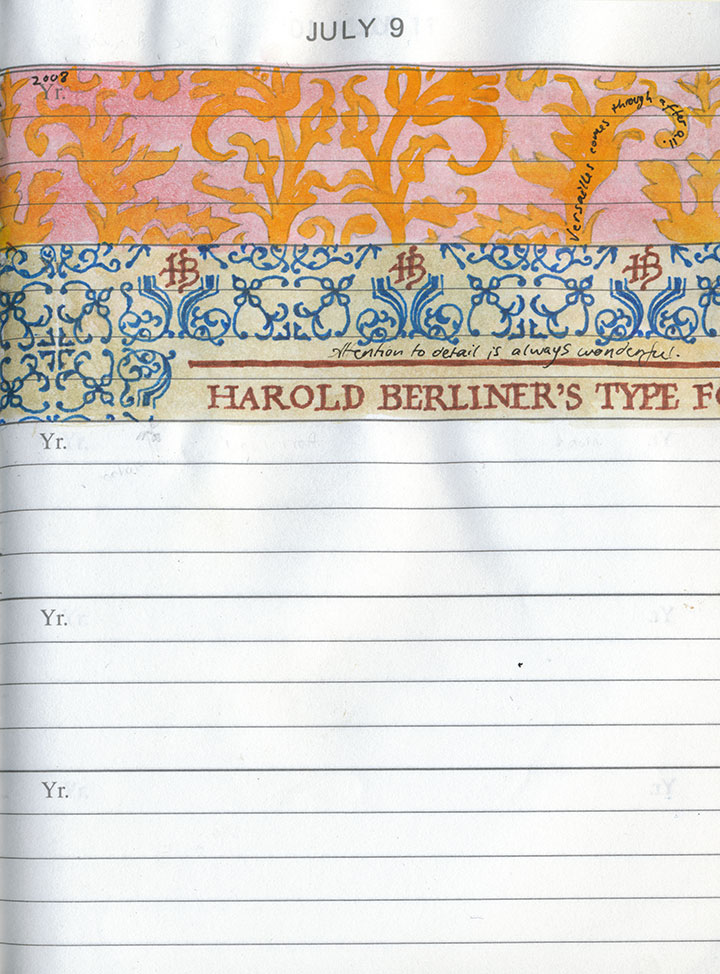
Now, exactly two years into the project, the same type of narrative I found in Claire Anderson’s diaries is already beginning to emerge. The drawings serve as a sort of flip-book; as one pages through the journal my personality, tastes and interests come to life, and the result is a more complete picture of myself than I ever could have come up with consciously. And an interesting by-product of all of this is the sometimes-unwitting documentation of the current era—this book might prove to be useful in other ways, someday.
The really curious bit is how the book is both intensely personal and completely ordinary. There isn’t a single image in there that I couldn’t share with a total stranger (no nudity, no embarrassing missives, no dirty laundry, etc.), and yet I’ve only actually shown it to a handful of people. I’m not sure why that is, but now that I’ve gone “public” about it I’m sure I’ll post occasional excerpts from here on out.
At the very least, maybe this will tighten the screws on my discipline a bit. Sarah and I learned quickly how difficult it is to keep a daily journal like this, whether in words or pictures (I doff my hat to Mrs. Anderson’s habits)—it’s all I can do to keep up with it, and I’m often playing catch-up. But now that I see how worthwhile the effort has been, I find myself excited for whatever tomorrow brings.
And isn’t that the whole point?
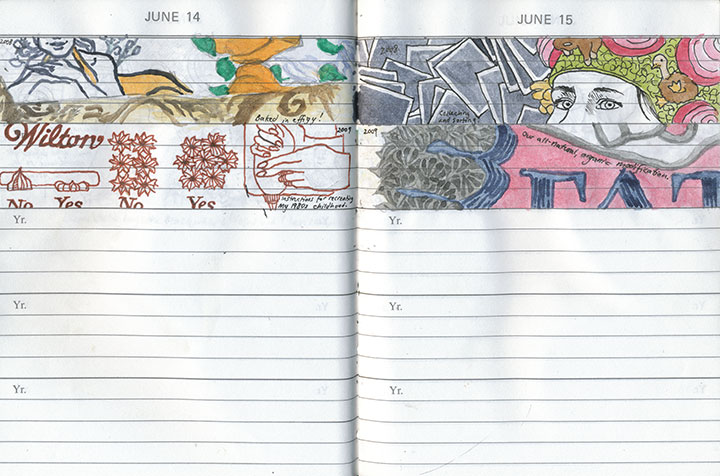
Wishing you a happy New Year full of wonderful events and tiny moments worth savoring—however you choose to remember them.

![Chandler O'Leary [logo]](https://chandleroleary.com/wp-content/themes/chandleroleary/images/logo.png)



















































